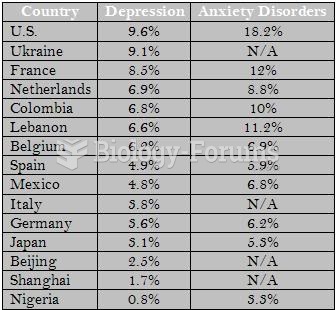Answer to Question 1
First we can see that burnout is conceptually different than depression because it is usually associated with work environments as compared to depression that generalizes across many situations. Second, upon closer inspection, note that there is more complexity in the clinical syndrome of depression than burnout since depression includes a wide range of symptoms not typically associated with burnout such as suicidal ideation, anhedonia (lack of pleasure), and significant weight loss (not due to dieting) or gain to name a few. Last, the research indicates that although burnout and clinical depression are moderately correlated, sharing around 26 of their variance, they are also distinct constructs, with cynicism and reduced efficacy only weakly overlapping with depression (see Shirom, 2011, for discussion).
Upon reaching advanced stages of burnout, persons may ultimately develop symptoms of depression if their general coping strategies fail, but advanced burnout states do not necessarily lead to depression. Instead, advanced burnout could lead to a hardening of one's cynical detached perspective toward clients or customers, that is, to the development of a dehumanizing outlook toward them. Such a hardened outlook could co-exist with depression or stand alone as a symptom independent of depression (Shirom, 2011).
Answer to Question 2
Although the exact mechanisms are not known, the most popular hypothesis relates to the hormone melatonin. The pineal gland, a tiny pine cone shaped gland (hence the name pineal) in the center of the brain, releases melatonin during the dark phase and inhibits its release during the light phase of the light-dark circadian cycle. Melatonin lowers our body temperature and causes drowsiness which helps us sleep at night. The hormone typically reaches its peak concentration in the middle of the night. However, environmental lighting, such as the lighting in a hospital during the night, will inhibit melatonin production.
Melatonin has an inhibiting effect on the production of estrogen and on the growth and proliferation of cancer cells. Therefore, suppression of melatonin through exposure to light during the nighttime peak concentration periods, likely results in an overall reduced level of blood melatonin levels. The reduced levels of melatonin weakens its ability to suppress estrogen which then has an indirect effect on breast cancer risk. Estrogen is known to directly stimulate hormone-sensitive tumors in the breast. Further, a reduction in melatonin levels directly limits the amount of anticarcinogenic protection this hormone can provide. Schernhammer et al. (2003) note that some studies indicate that colorectal cancer patients have lower levels of melatonin, supporting the contention that suppressed melatonin may be a mechanism explaining the increased colorectal cancer risk for night workers. In addition, the direct anticarcinogenic effect of melatonin applies to other cancer types as well, such as breast cancer.







